1. Swaminathan R. Magnesium metabolism and its disorders. Clin Biochem Rev. 2003; 24:47–66. PMID:
18568054.
2. Han H, Fang X, Wei X, Liu Y, Jin Z, Chen Q, Fan Z, Aaseth J, Hiyoshi A, He J, et al. Dose-response relationship between dietary magnesium intake, serum magnesium concentration and risk of hypertension: a systematic review and meta-analysis of prospective cohort studies. Nutr J. 2017; 16:26. PMID:
28476161.
3. Piuri G, Zocchi M, Della Porta M, Ficara V, Manoni M, Zuccotti GV, Pinotti L, Maier JA, Cazzola R. Magnesium in obesity, metabolic syndrome, and type 2 diabetes. Nutrients. 2021; 13:320. PMID:
33499378.
4. Bae YJ, Kim MH, Choi MK. Analysis of magnesium contents in commonly consumed foods and evaluation of its daily intake in Korean independent-living subjects. Biol Trace Elem Res. 2010; 135:182–199. PMID:
19756403.
5. Ford ES, Mokdad AH. Dietary magnesium intake in a national sample of US adults. J Nutr. 2003; 133:2879–2882. PMID:
12949381.
6. Verly Junior E, Marchioni DM, Araujo MC, Carli E, Oliveira DC, Yokoo EM, Sichieri R, Pereira RA. Evolution of energy and nutrient intake in Brazil between 2008-2009 and 2017-2018. Rev Saude Publica. 2021; 55:5s. PMID:
34910054.
7. Sung CJ, Rho SN, Kim AJ, Choi MK, Lee JH. Relationship among dietary intakes, blood levels, and urinary excretions of Ca, P, Mg and serum lipid levels in Korean rural adult men and women. J Korean Soc Food Nutr. 1993; 22:709–715.
8. Choi MK, Bae YJ. Relationship between dietary magnesium, manganese, and copper and metabolic syndrome risk in Korean adults: the Korea National Health and Nutrition Examination Survey (2007-2008). Biol Trace Elem Res. 2013; 156:56–66. PMID:
24218228.
9. Kweon S, Park JY, Park M, Kim Y, Yeon SY, Yoon L, Yun S, Park S, Yang JE, Kim Y, et al. Trends in food and nutrient intake over 20 years: findings from the 1998-2018 Korea National Health and Nutrition Examination Survey. Epidemiol Health. 2021; 43:e2021027. PMID:
33872482.
10. Dibaba DT, Xun P, Fly AD, Yokota K, He K. Dietary magnesium intake and risk of metabolic syndrome: a meta-analysis. Diabet Med. 2014; 31:1301–1309. PMID:
24975384.
11. Larsson SC, Orsini N, Wolk A. Dietary magnesium intake and risk of stroke: a meta-analysis of prospective studies. Am J Clin Nutr. 2012; 95:362–366. PMID:
22205313.
12. Ko HJ, Youn CH, Kim HM, Cho YJ, Lee GH, Lee WK. Dietary magnesium intake and risk of cancer: a meta-analysis of epidemiologic studies. Nutr Cancer. 2014; 66:915–923. PMID:
24910891.
13. Yary T, Aazami S, Soleimannejad K. Dietary intake of magnesium may modulate depression. Biol Trace Elem Res. 2013; 151:324–329. PMID:
23238611.
14. Sun C, Wang R, Li Z, Zhang D. Dietary magnesium intake and risk of depression. J Affect Disord. 2019; 246:627–632. PMID:
30611059.
15. Fang X, Wang K, Han D, He X, Wei J, Zhao L, Imam MU, Ping Z, Li Y, Xu Y, et al. Dietary magnesium intake and the risk of cardiovascular disease, type 2 diabetes, and all-cause mortality: a dose-response meta-analysis of prospective cohort studies. BMC Med. 2016; 14:210. PMID:
27927203.
16. Korean Nutrition Society. Korea Disease Control and Prevention Agency. Development of Database of Magnesium and Zinc for Korea National Health and Nutrition Examination Survey’s Data Processing. Cheongju: Korea Disease Control and Prevention Agency;2022.
17. Kweon S, Kim Y, Jang MJ, Kim Y, Kim K, Choi S, Chun C, Khang YH, Oh K. Data resource profile: the Korea National Health and Nutrition Examination Survey (KNHANES). Int J Epidemiol. 2014; 43:69–77. PMID:
24585853.
18. Shim JS, Kim KN, Lee JS, Yoon MO, Lee HS. Dietary intake and major source foods of vitamin E among Koreans: findings of the Korea National Health and Nutrition Examination Survey 2016–2019. Nutr Res Pract. 2022; 16:616–627. PMID:
36238383.
19. Shim JS, Shim SY, Cha HJ, Kim J, Kim HC. Association between ultra-processed food consumption and dietary intake and diet quality in Korean adults. J Acad Nutr Diet. 2022; 122:583–594. PMID:
34463621.
20. Greenfield S, Southgate DA. Food Composition Data, Production, Management and Use. 2nd ed. Rome: FAO/INFOODS;2003.
22. National Institute of Agricultural Sciences (NAS). Korean Food Composition Table (9.3 Version). Wanju: NAS;2021.
23. Chinese Center for Disease Control and Prevention (CDC). Vegetable food. China Food Composition Tables, Standard Edition. 6th Edition. Beijing: China CDC;2018.
24. Chinese Center for Disease Control and Prevention (CDC). Animal food. China Food Composition Tables, Standard Edition. 6th Edition. Beijing: China CDC;2019.
26. U.S. Department of Agriculture. FoodData Central [Internet]. Washington, D.C.: U.S. Department of Agriculture;2020. cited 2021 March 7. Available from:
https://fdc.nal.usda.gov/Laboratory.
29. Korean Nutrition Society. Ministry of Health and Welfare (KR). Dietary Reference Intakes for Koreans 2020. Sejong: Ministry of Health and Welfare;2020.
30. Korea Centers for Disease Control and Prevention. 2016–2018 Guidebook for Using the Data from Korea National Health and Nutrition Examination Survey. Cheongju: Korea Centers for Disease Control and Prevention;2020.
31. Lee MJ, Popkin BM, Kim S. The unique aspects of the nutrition transition in South Korea: the retention of healthful elements in their traditional diet. Public Health Nutr. 2002; 5:197–203. PMID:
12027285.
32. Yeon JY, Sung CJ. A Study on dietary mineral intakes, urinary mineral excretions, and bone mineral density in Korean postmenopausal women. Korean J Community Nutr. 2011; 16:569–579.
33. Jackson SE, Smith L, Grabovac I, Haider S, Demurtas J, López-Sánchez GF, Soysal P, Redsell S, Isik AT, Yang L. Ethnic differences in magnesium intake in U.S. older adults: findings from NHANES 2005
−2016. Nutrients. 2018; 10:1901. PMID:
30518025.
34. Wang JL, Weng YL, Pan WH, Kao MD. Trends and nutritional status for magnesium in Taiwan from NAHSIT 1993 to 2008. Asia Pac J Clin Nutr. 2011; 20:266–274. PMID:
21669595.
36. Whitton C, Nicholson SK, Roberts C, Prynne CJ, Pot GK, Olson A, Fitt E, Cole D, Teucher B, Bates B, et al. National Diet and Nutrition Survey: UK food consumption and nutrient intakes from the first year of the rolling programme and comparisons with previous surveys. Br J Nutr. 2011; 106:1899–1914. PMID:
21736781.
37. Schiefermeier-Mach N, Egg S, Erler J, Hasenegger V, Rust P, König J, Purtscher AE. Electrolyte intake and major food sources of sodium, potassium, calcium and magnesium among a population in western Austria. Nutrients. 2020; 12:1956. PMID:
32630029.
38. Liu J, Huang Y, Dai Q, Fulda KG, Chen S, Tao MH. Trends in magnesium intake among Hispanic adults, the National Health and Nutrition Examination Survey (NHANES) 1999-2014. Nutrients. 2019; 11:2867. PMID:
31766698.
39. Shim JS, Shim SY, Cha HJ, Kim J, Kim HC. Socioeconomic characteristics and trends in the consumption of ultra-processed foods in Korea from 2010 to 2018. Nutrients. 2021; 13:1120. PMID:
33805412.
40. Fawcett WJ, Haxby EJ, Male DA. Magnesium: physiology and pharmacology. Br J Anaesth. 1999; 83:302–320. PMID:
10618948.
41. Park ES, Kim MH, Choi MK. Nutritional assessment focusing on minerals of ready-to-cook foods sold in Korea. J East Asian Soc Diet Life. 2019; 29:501–510.
42. Choi MK, Weaver CM. Daily Intake of magnesium and its relation to urinary excretion in Korean healthy adults consuming self-selected diets. Biol Trace Elem Res. 2017; 176:105–113. PMID:
27543063.
43. Ministry of Health and Welfare (KR). Korea Centers for Disease Control and Prevention. Guidelines for Nutrition Survey: Korea National Health and Nutrition Examination Survey. 6th Edition (2013–2015). Cheongju: Korea Centers for Disease Control and Prevention;2015.
44. Shim JS, Oh K, Kim HC. Dietary assessment methods in epidemiologic studies. Epidemiol Health. 2014; 36:e2014009. PMID:
25078382.
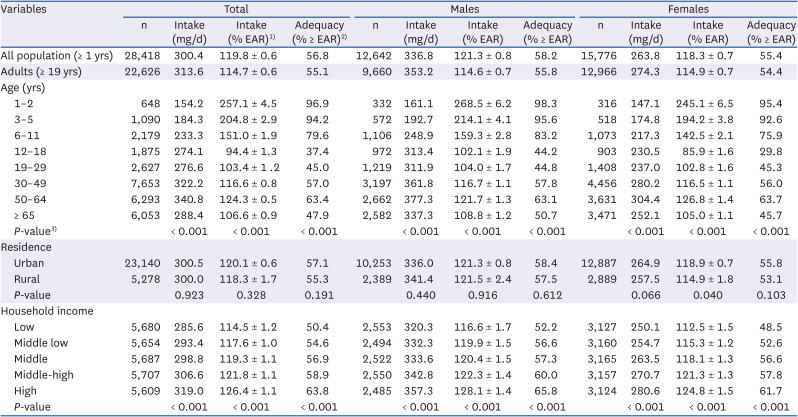
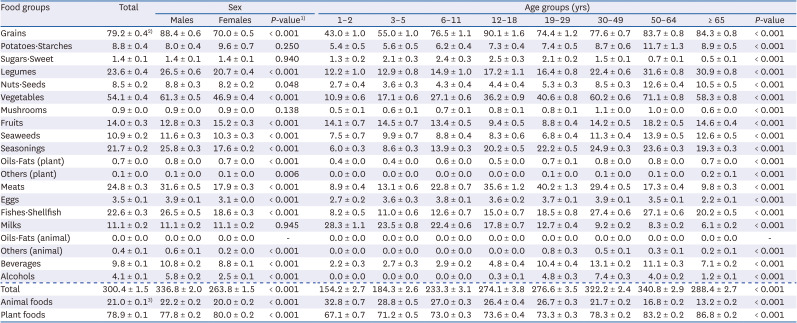
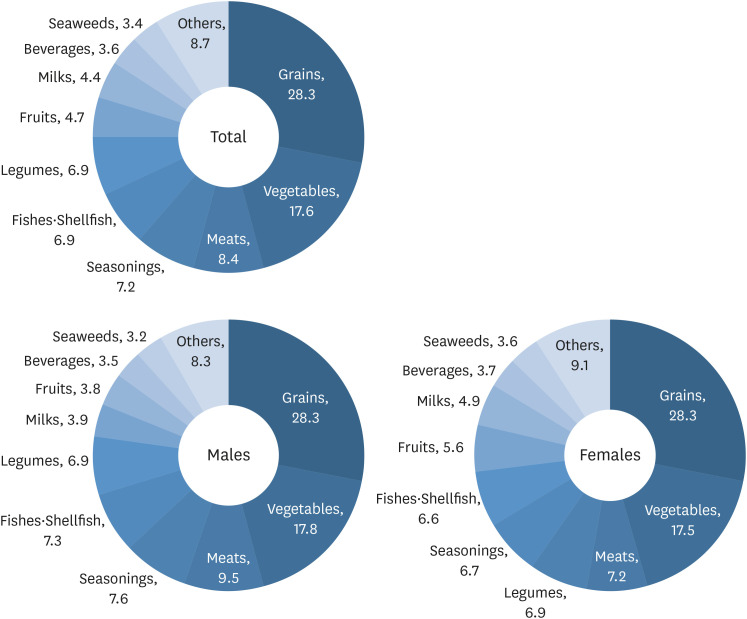
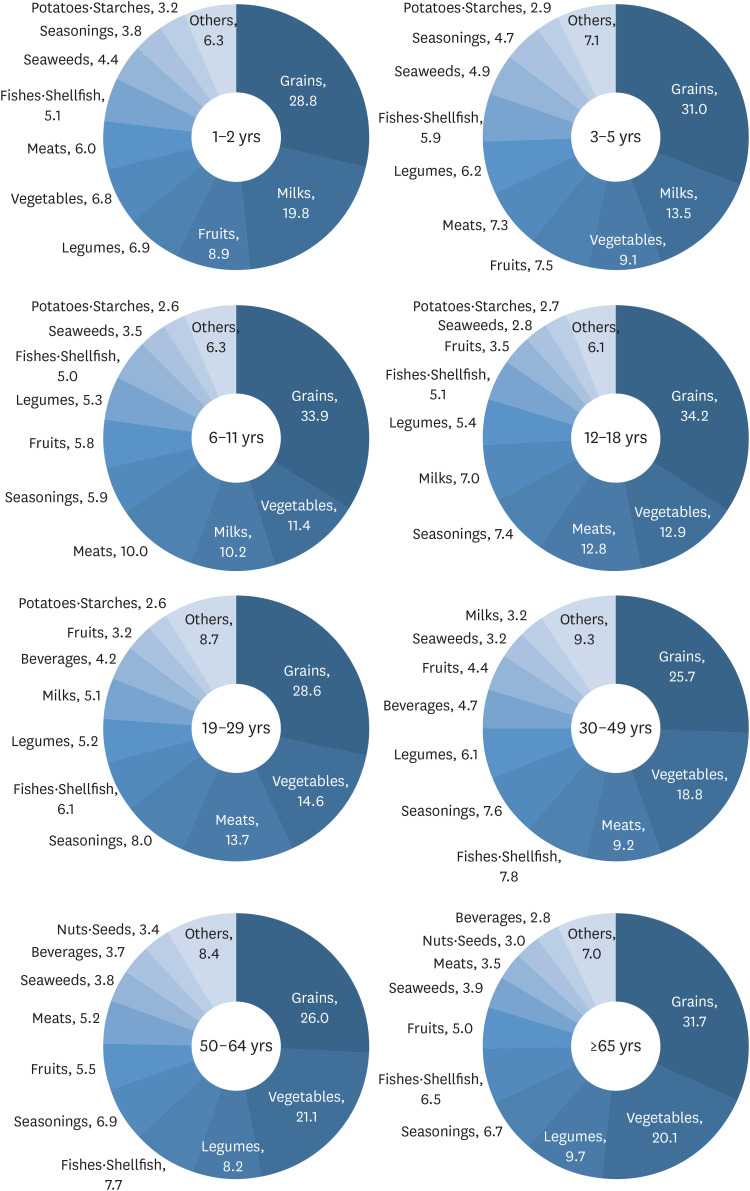
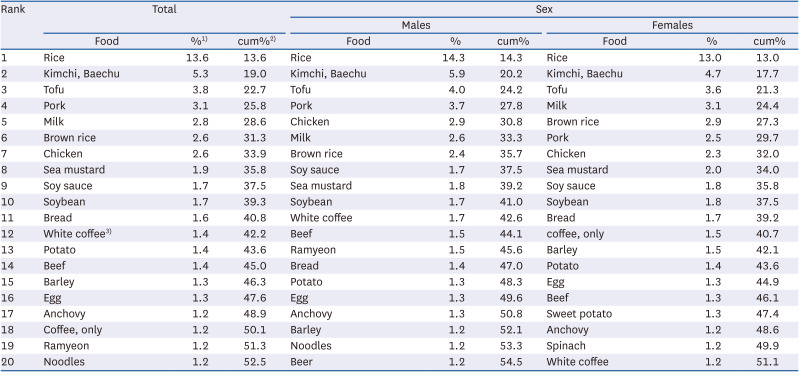
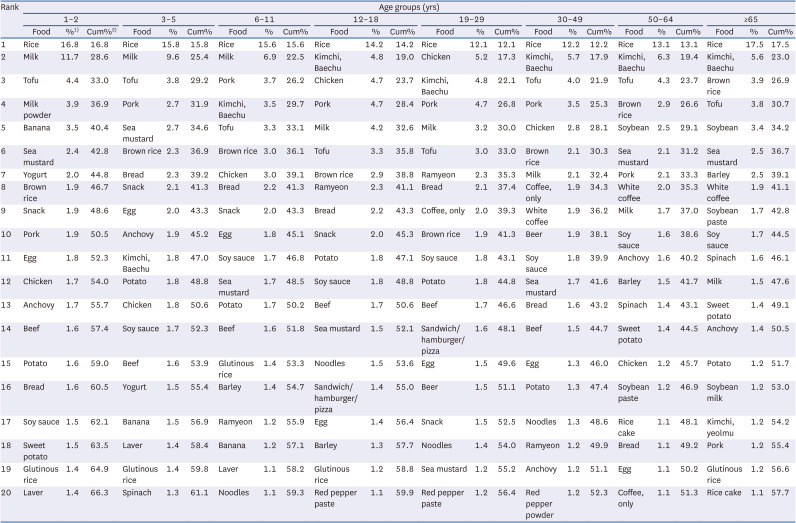




 PDF
PDF Citation
Citation Print
Print



 XML Download
XML Download